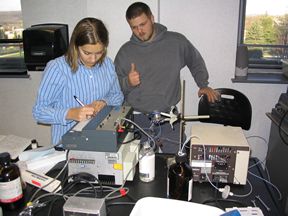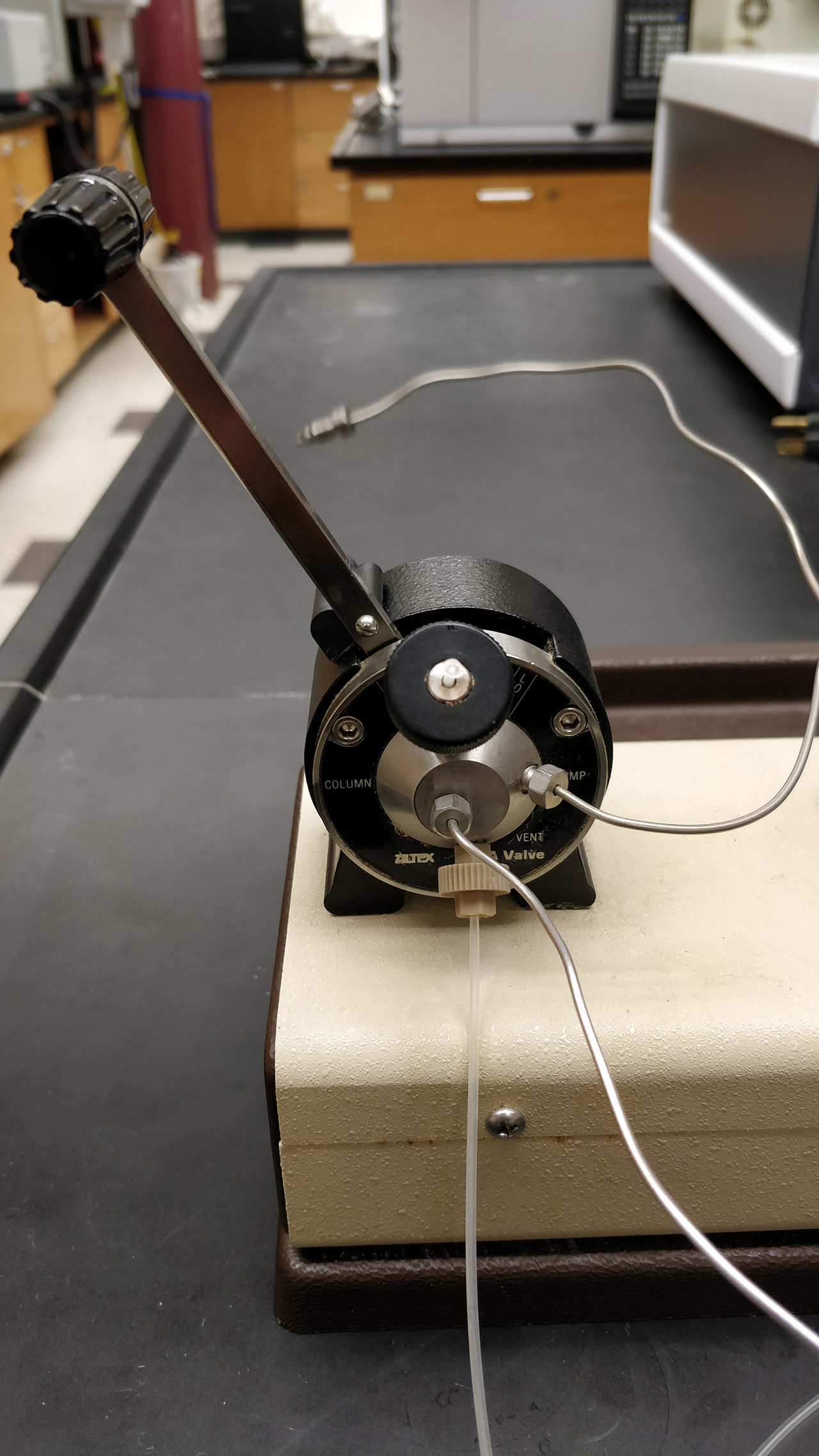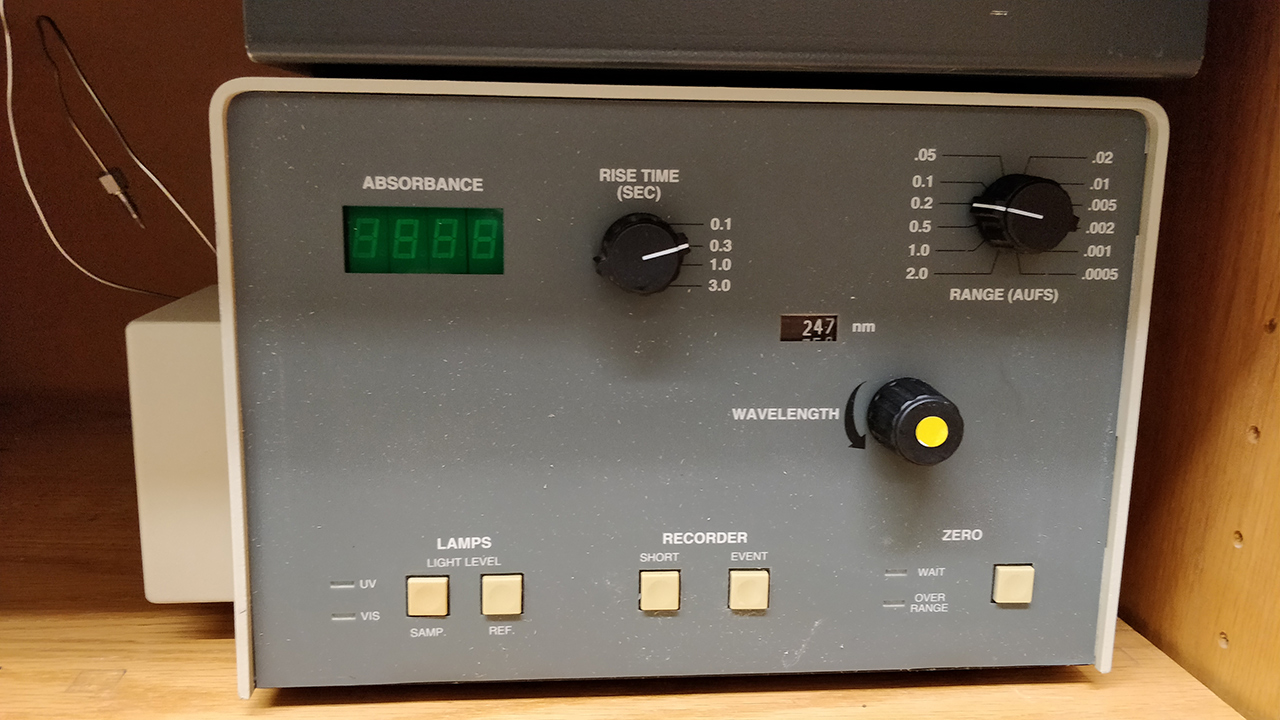HIgh Performance Liquid Chromatography
Background
In general, chromatography is a term that describes techniques used to separate components of mixtures. In liquid chromatography, a liquid is used to carry a mixture across a bed of material. Because the liquid moves, it is called the mobile phase. The bed of material, on the other hand, is called the stationary phase because (you guessed it) it doesn't move. As the mobile phase carries the mixture across the stationary phase, some of the components of the mixture "stick" to the stationary phase more than others. Therefore, the components travel at different rates across the stationary phase, and exit the stationary phase at different times. The components of the mixture have been separated!
In high-performance liquid chromatography (HPLC) the liquid mobile phase is forced through the stationary phase. A simple HPLC would include a solvent reservoir to hold the liquid mobile phase, a pump to pressurize the liquid mobile phase, an injector to allow injection of a small volume of the sample mixture under high pressure, a column containing the bed of stationary phase, a detector to detect the presence of components as they exit the column, and some means to record the detector signal.

More sophisticated HPLCs may involve more than one pump to generate mobile phases mixtures, autosamplers with robotic arms capable of injecting perhaps 100 samples unattended, small ovens to control column temperature, mass spectral detectors capable of identifying components as they exit the column, and complete computer control for automation.
Since its introduction in the late 1960's, HPLC has become one of the most widely used separation techniques in the world.
HPLC Instrumentation
Shimadzu LC-8040 Liquid Chromatograph with a Triple Quadrupole Mass Spectral Detector
This instrument has an automated liquid chromatographic (LC) front end, and a powerful tandem mass spectral detector capable of discriminating molecules according to mass and electrical charge (its mass to charge ratio), and the way molecules dissociate when they collide with inert gas atoms. This detection strategy allows one to single out individual molecules from complex samples, and determine concentrations of molecules at extremely low levels (sometimes sub-part per billion concentrations). This instrument is described more fully on the LC-MS/MS page.
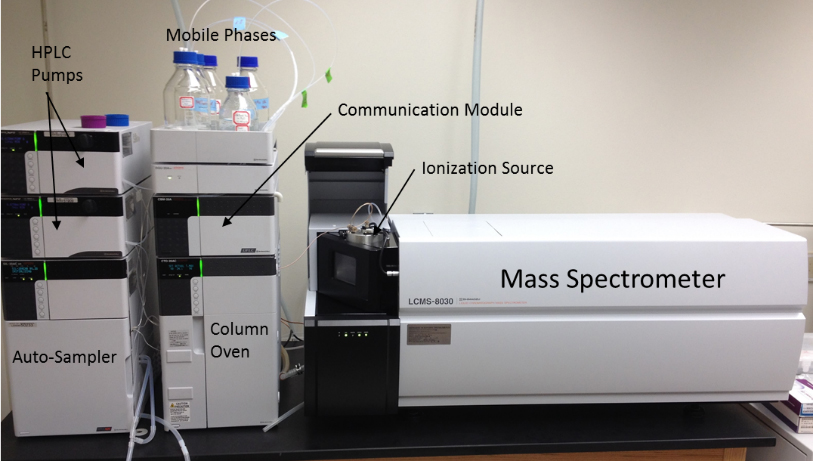
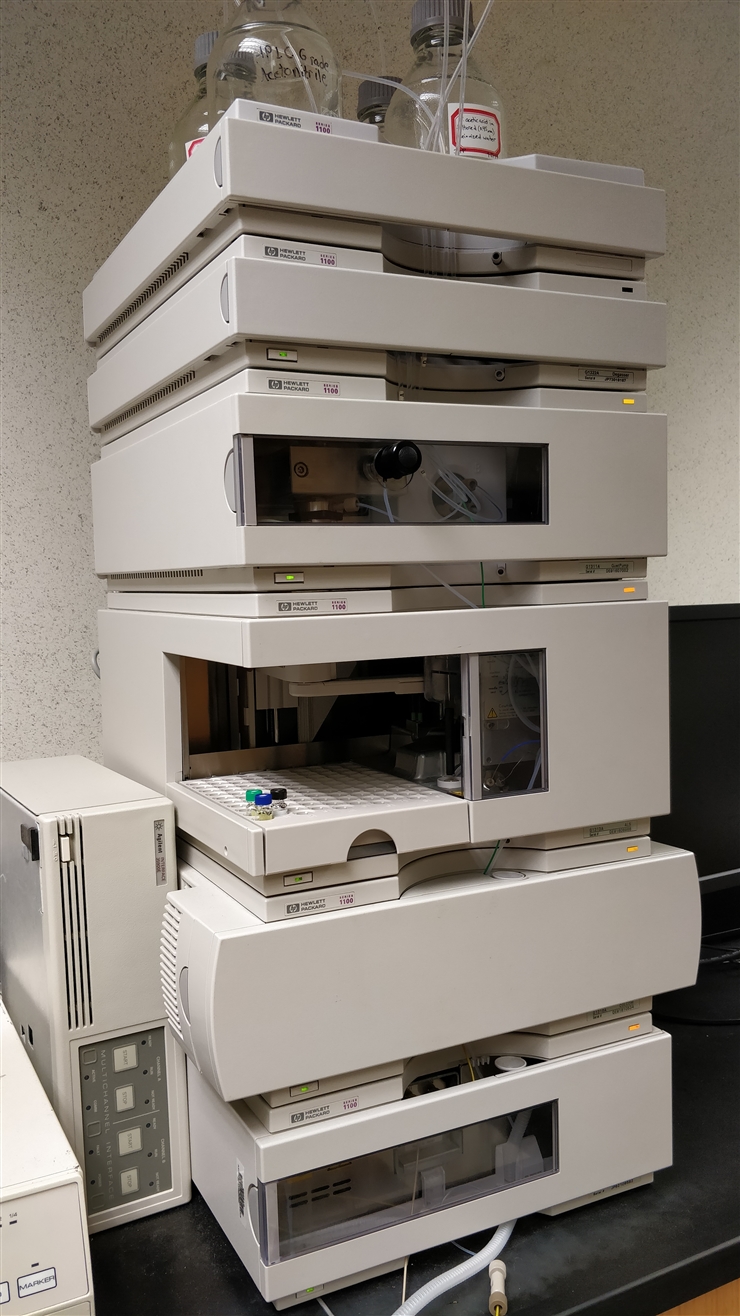
Agilent 1100 HPLCs
Our two Agilent 1100 HPLC systems are fully automated systems operating under the most recent version of Agilent's OpenLAB ChemStation software. The quaternary pumps are capable of mixing four different solvents to produce the mobile phase. The autosamplers are capable of automating the injection of up to 100 samples. One system is equipped with a multiwavelength detector capable of monitoring 5 wavelengths at a time, and the other has both a variable wavelength detector and a refractive index detector which can detect components that don't absorb light in the UV or visible regions (like sugars).
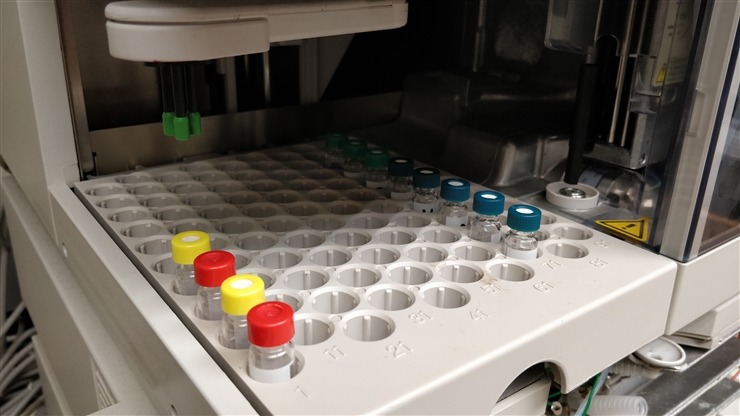

Chromatogram of alpha- and beta-acids in hops
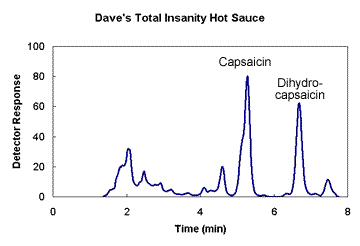
Chromatogram of Dave's Total Insanity Sauce extract showing peaks for Capsaicin and Dihydrocapsaicin
Dionex DX-120 Ion Chromatograph
The Dionex Ion Chromatograph (IC) is designed to separate ions rather than neutral molecules. As in HPLC, the separation also involves both mobile and stationary phases, but the stationary phase has electrically charged groups to attract ions to various degrees. The detector in this system monitors the conductivity of the mobile phase. When an ion exits the column, the conductivity changes. This system is fully automated and includes an autosampler. The autosamplers allow us to perform repetitive injections overnight and retrieve data for analysis without wasting precious class time.
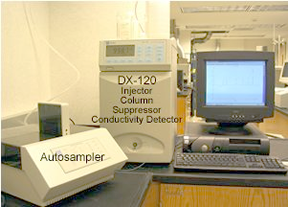
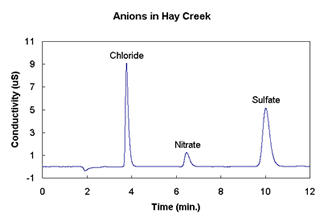
Old HPLC Pumps, Injectors, and Detectors
We have plenty of old, functional HPLC components. These are used primarily to teach the basics of HPLC and HPLC maintenance. Within the undergraduate curriculum, students piece together their own HPLC systems and conduct a set of experiments using the instrument they constructed.
By constructing an HPLC system, students learn practical aspects of HPLC such as: sealing a compression fitting, priming a pump, installing a column, troubleshooting, creating electrical connections for the detector, etc. It is also much more practical to demonstrate changing pump seals or check valves on one of these pumps than it is one of the automated systems.
Spare HPLC Parts
2 Beckman 110 B Pumps
2 Waters 6000A Pumps
2 SSI Accuflow Series IV Pumps
2 Rheodyne 7725 Manual Injectors
1 Altex Manual Injector
1 Waters Manual Injector
2 SSI 500 Variable Wavelength Detector
1 Beckman 164 Variable Wavelength Detector
1 Waters 486 Variable Wavelength Detector
1 Waters 484 Variable Wavelength Detector
Applications of HPLC
HPLC is one of the most widely-applied analytical separation techniques. When you start to look at some of the websites of some of the vendors that sell HPLC columns, you start to get a glimpse of just how widespread these applications are. If you can think of a complex mixture, there is probably an HPLC method that has been developed to tackle the separation. I have broken out a few application areas below, and listed a few specific separations under each of these. Keep in mind that this is a minuscule sampling.
Pharmaceutical
Tablet dissolution of pharmaceutical dosages
Shelf-life determinations of pharmaceutical products
Identification of counterfeit drug products
Pharmaceutical quality control
Environmental
Phenols in Drinking Water
Identification of diphenhydramine in sediment samples
Biomonitoring of PAH pollution in high-altitude mountain lakes through the analysis of fish bile
Estrogens in coastal waters - The sewage source
Toxicity of tetracyclines and tetracycline degradation products to environmentally-relevant bacteria
Assessment of TNT toxicity in sediment
Forensics
A mobile HPLC apparatus at dance parties - on-site identification and quantification of the drug Ecstasy
Identification of anabolic steroids in serum, urine, sweat, and hair
Forensic analysis of textile dyes
Determination of cocaine and metabolites in meconium
Simultaneous quantification of psychotherapeutic drugs in human plasma
Clinical
Quantification of DEET in Human Urine
Analysis of antibiotics
Increased urinary excretion of aquaporin 2 in patients with liver cirrhosis
Detection of endogenous neuropeptides in brain extracellular fluids
Food and Flavor
Ensuring soft drink consistency and quality
Analysis of vicinal diketones in beer
Sugar analysis in fruit juices
Polycyclic aromatic hydrocarbons in Brazilian vegetables and fruits
Trace analysis of military high explosives in agricultural crops
Stability of aspartame in the presence of glucose and vanillin







